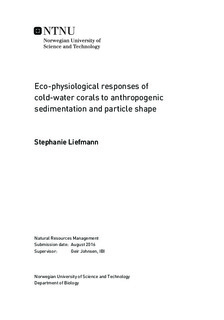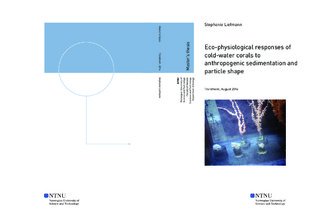| dc.description.abstract | Cold-water coral habitats have been known to science for centuries, but only recently have scientists stated to study them. Among these habitats, also soft corals are found, and they have been even less investigated than the more well known stony corals. Some of the aspects that are known about these habitats is that they have very slow growth rates, they are also associated with high species-diversity and they are sensitive to anthropogenic disturbances. One anthropogenic disturbance that might occur is excessive sedimentation, from activities such as mine tailing disposal to the marine environment by the mining industry. Particles contained in the tailings are sharper than natural occurring sediments, thus the morphology of the particles could also affect soft corals. Two soft corals: Duva florida and Primnoa resedaeformis were chosen as model organisms to study the effects of excessive sedimentation and the corresponding effect of particle shape. Corals were exposed to a sediment concentration of 18 mg L-1 of two type of sediment.The first type was rough edged mine tailings (MT) and the second, smooth edged spherical glass beads (GB), both with particle size distribution was 0-63µm. The experiments lasted for 3 months. Sedimentation effects were investigated using 13C/12C isotope ratio to assess food intake, effects on the tissue and behavior were determined with time lapse pictures, and histological samples to enumerate and identify particles inside the polyps. Food intake decreased significantly in D. florida and increased significantly in P. resedaeformis, exposed to mine tailings. Duva. florida exhibited a behavioral response with the whole specimen being contracted for longer periods of time under MT treatment. Primnoa resedaeformis lost significantly bigger proportion of polyps than control individuals under both mine tailing and glass bead treatments. Histological samples showed onlymine tailing particles of sizes between 0-10µm embedded in the tissue of both species. The results suggest that sharp small particles are more harmful than smooth edged particles. The results of this study could aid to create guidelines for management of cold-water soft coral habitats in regard to anthropogenic sedimentation disturbances | |

